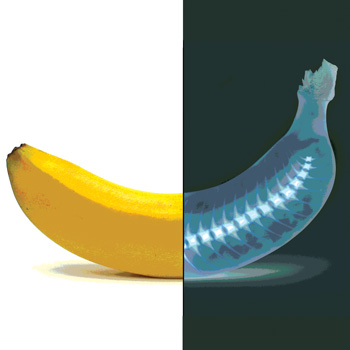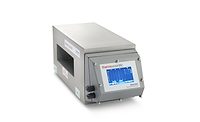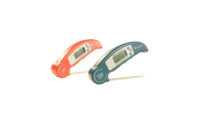New Technologies for Foreign Body Identification

Foreign bodies in food constitute one of the most serious causes of consumer complaints and can result in substantial losses and brand damage. While some of these complaints are justified and the objects behind them can be considered as true foreign bodies, others may be due to poorly mixed or misprocessed product. Additionally, it is common for the foreign body to have been introduced into the product by the customers themselves, either accidentally, through home contamination or, more concerningly, as a result of malicious contamination, whether by the complainant or by someone involved in food manufacture or distribution. Nevertheless, when complaints are received, it is important to be able to identify the nature and origin of the object both quickly and cost-effectively, so that an appropriate response can be made. This is particularly so in the age of social networking, where complainants can readily publicize their dissatisfaction.
The food microscopist charged with the laboratory identification of foreign bodies reported from food products will have to use a wide range of techniques in this work. Many of these techniques are classical microscopy and microanalytical methods borrowed from different sciences. A lot of these methods are quite basic and require a minimum of equipment beyond good-quality light microscopes. However, where the number of samples being investigated can justify the investment, there are some more sophisticated techniques that can be employed to great effect.
DNA Analysis
The development of DNA analysis has made an enormous impact, not only on scientific research but also on forensic science, with large numbers of convictions for a wide range of crimes having been based on DNA analysis since the 1980s. This approach also has tremendous potential for work in the identification of foreign bodies, particularly small pieces of animal or plant tissue that cannot be fully identified by either their general appearance or their structure as seen under the microscope. An example of this examined in our laboratory was a small fragment of an animal limb that was reported from a salad leaf product. The general structure indicated that it was a bone joint from a vertebrate animal, but not apparently a mammal. DNA sequencing showed that the sample was from a toad, probably accidentally caught up in harvesting machinery. This investigation was based on DNA bar coding, a taxonomic method that uses a short genetic region in an organism’s DNA to identify it as belonging to a particular species. The reference data came from the international cooperative Consortium for the Barcode of Life (CBOL). CBOL was created in May 2004; since then, more than 200 organizations from more than 50 countries have joined CBOL and agreed to put their bar code data in a public database. The gene region that is being used as the standard bar code for almost all animal groups is a 648-base pair region in the mitochondrial cytochrome c oxidase 1 gene (Co1), which is highly effective in identifying birds, insects, fish and many other animal groups. Co1 is not an effective bar code region in plants because it evolves too slowly, but two gene regions in the chloroplast, matK and rbcL, have been approved as the bar code regions for plants. The CBOL database now includes over 2 million bar code sequences from over 160,000 species of animals, plants and fungi.
However, the potential for DNA analysis is rarely used in routine foreign body identification for a number of reasons. Probably the most important of these is, quite simply, cost—in most foreign body cases, it simply isn’t worth spending the money on DNA analysis, which is significantly more expensive than most of the techniques used. Another reason is the practicalities of obtaining suitable comparison samples. For example, to identify the exact source of human hair found in a food product, the analyst would need to have access to reference DNA samples from all likely sources of the hair. This could include a large number of people from the food factory and possibly the complainant as well, and it may well be deemed undesirable to try to obtain all of these samples. A further difficulty is the problem of mixed DNA samples. An example of this might be the identification of a suspect piece of animal tissue in a meat sample. If the suspect tissue has been in intimate contact with the meat from which it was reported—say, lamb—then a normal DNA sequencing approach will inevitably produce a match for lamb. In a case like this, it is necessary to identify all the likely sources of contamination and test specifically for those species using a targeted approach. However, if the correct species type has not been included in the testing, then it will be missed and the conclusion will be that the suspect tissue is lamb.
Fourier Transform-Infrared Spectroscopy (FT-IR)
Infrared spectroscopy has been an important analytical tool for many years, but recent advances have increased its usefulness. The application of Fourier transform techniques to the results has lowered the detection limit from the microgram to the nanogram range and from the ppm to ppb level. Meanwhile, sample presentation has been greatly simplified with the introduction of diamond ATR (attenuated total reflectance) sampling.
Infrared spectroscopy is based on the interaction of specific wavelengths of infrared light with particular chemical bonds in the material being studied, particularly organic molecules. Individual bonds, such as C-O, C-H or C-N, absorb infrared light at a particular wavelength. Illumination of a molecule will produce a spectrum of peaks, and each peak can be related to a particular type of bond. Individual spectra therefore provide a “fingerprint” of individual molecules. This is therefore a very powerful technique to identify the chemical composition of foreign bodies. It is of most immediate use with common organic materials such as plastics, but is also extremely useful with many other organic materials such as fat, protein or carbohydrate, the identification of tablets or capsules found in food and many other organic samples such as unrecognizable lumps of food material.
FT-IR microscopy can be used to study the chemical composition of very small samples (microsize), in effect using a microscope to apply FT-IR spectroscopy to those samples. However, the most valuable application is in the chemical mapping of a sample of varying composition to determine the chemical identity of particular components. This can be used to study food materials, such as the composition of wheat grains, where chemical mapping shows the distribution of protein, starch and cell walls, which again can help in cases where the foreign body is formed from the food material itself.
 FT-IR microscopy can also be used in the analysis of multilaminate plastic packaging materials, which are composed of a number of different, very thin layers, each of which has a specific purpose (Figure 1). When problems are encountered with such materials—for example, if a lidding film will not seal adequately to a food tray, it is important to be able to analyze the different layers to check them against the manufacturer’s specification. A cross-section is therefore cut from the film and examined under the microscope, and where fragments of packaging turn up as foreign bodies, the detail of the structure can identify the source of the problem very precisely.
FT-IR microscopy can also be used in the analysis of multilaminate plastic packaging materials, which are composed of a number of different, very thin layers, each of which has a specific purpose (Figure 1). When problems are encountered with such materials—for example, if a lidding film will not seal adequately to a food tray, it is important to be able to analyze the different layers to check them against the manufacturer’s specification. A cross-section is therefore cut from the film and examined under the microscope, and where fragments of packaging turn up as foreign bodies, the detail of the structure can identify the source of the problem very precisely.
Gas Chromatography-Mass Spectrometry (GC-MS) and Liquid Chromatography-MS (LC-MS)
GC-MS and LC-MS are powerful analytical techniques for the detection and identification of a wide range of different chemical species, particularly when very small amounts of material are available for analysis. They combine the features of gas or liquid chromatography to separate the chemical components and mass spectrometry to identify these different substances within a test sample.
One example is the identification of the active ingredient in medical tablets and capsules, particularly useful for medical products with very small amounts of active ingredients. Sample preparation is simply a question of extraction into a suitable solvent that is then injected onto the column of the instrument. The components of the mixture are separated on the chromatography column and the characteristic molecular fragments are identified by mass spectrometry. Commercial spectral libraries are available that include virtually all the various active ingredients used in medical products; the skill is in the interpretation of the data.
Foods and beverages contain numerous aromatic compounds, some naturally present in the raw materials and some formed during processing. GC-MS is extensively used to analyze these compounds, which include esters, fatty acids, alcohols, aldehydes, terpenes, etc. Determining the presence of specific volatile molecules may help in identifying the source of any foreign material in a food sample.
Scanning Electron Microscopy (SEM) and X-Ray Microanalysis
SEM gives pseudo-three-dimensional images with higher magnification and greater depth of focus than a light microscope. Samples can be relatively easily prepared and quickly examined by a scanning electron microscope, making it an invaluable tool for the rapid examination of the three-dimensional structure of many samples.
 More detailed microanalysis of SEM samples may be carried out using an energy-dispersive X-ray microanalyzer. Whereas FT-IR spectroscopy analyzes the spectra associated with chemical bonds and is therefore primarily useful for organic materials, X-ray microanalysis is used to determine the elemental composition of a material. The energies of the X-rays given off by a sample irradiated with an electron beam are characteristic of the elements present in the sample, and so the X-ray microanalyzer can be used to give a quick nondestructive elemental composition of the sample. Thus, it has a wide application in foreign body identification. It can be used to determine such things as the mineral composition of a substance, such as the nature of glass found as a foreign object in food. Different types of glass have different levels of elements such as sodium, aluminum, magnesium, lead and calcium—and so can be distinguished by their elemental fingerprint. The technique can also rapidly identify samples erroneously reported as glass, such as struvite (magnesium ammonium phosphate, a harmless glass-like mineral found in canned fish products such as salmon, tuna and crab), salt and silica minerals. Despite the widespread use of metal detectors and magnets in food factories, metal fragments continue to be reported from food products, and the elemental composition of a metal is the key to identifying it as aluminum, tinplate, etc. The various metals used in the construction of food processing machinery can be distinguished using X-ray microanalysis, so that the specific cause of a factory contamination can be pinpointed (Figure 2). The X-ray analyzer can also be used to map the distribution of elements across a sample. An example of this is the examination of discolored areas on mineral fragments, where the finding of iron, chromium and nickel can be used to show that the mineral fragments have passed through stainless steel machinery, probably as part of a food process.
More detailed microanalysis of SEM samples may be carried out using an energy-dispersive X-ray microanalyzer. Whereas FT-IR spectroscopy analyzes the spectra associated with chemical bonds and is therefore primarily useful for organic materials, X-ray microanalysis is used to determine the elemental composition of a material. The energies of the X-rays given off by a sample irradiated with an electron beam are characteristic of the elements present in the sample, and so the X-ray microanalyzer can be used to give a quick nondestructive elemental composition of the sample. Thus, it has a wide application in foreign body identification. It can be used to determine such things as the mineral composition of a substance, such as the nature of glass found as a foreign object in food. Different types of glass have different levels of elements such as sodium, aluminum, magnesium, lead and calcium—and so can be distinguished by their elemental fingerprint. The technique can also rapidly identify samples erroneously reported as glass, such as struvite (magnesium ammonium phosphate, a harmless glass-like mineral found in canned fish products such as salmon, tuna and crab), salt and silica minerals. Despite the widespread use of metal detectors and magnets in food factories, metal fragments continue to be reported from food products, and the elemental composition of a metal is the key to identifying it as aluminum, tinplate, etc. The various metals used in the construction of food processing machinery can be distinguished using X-ray microanalysis, so that the specific cause of a factory contamination can be pinpointed (Figure 2). The X-ray analyzer can also be used to map the distribution of elements across a sample. An example of this is the examination of discolored areas on mineral fragments, where the finding of iron, chromium and nickel can be used to show that the mineral fragments have passed through stainless steel machinery, probably as part of a food process.
Recent developments in scanning electron microscopes include variable pressure and Environmental. A variable pressure scanning electron microscope avoids the need for coating a sample with gold or carbon to create an electrically conducting surface, required in a conventional scanning electron microscope to avoid a buildup of electrical charge on the sample. A carefully controlled partial vacuum inside the microscope acts as an electrical ground for the sample, although a somewhat poorer image can result. This means that most foreign body, food or packaging samples can be readily examined with virtually no specialized sample preparation. Environmental SEM allows control of not only the vacuum but also the humidity inside the chamber. This allows wet samples to be examined, which is very useful where food samples or moist foreign bodies are concerned, since they can often be analyzed without drying.
Computer-Aided Tomography (CT-Scanning)
CT-scanning is a well-known tool in medicine, where it is used for the noninvasive investigation of a wide range of medical conditions, such as cancerous tumors. These instruments have occasionally been used in the study of food products, such as following the development of dough bubbles as bread is proved and then baked. More recently, laboratory instruments have been developed for the noninvasive study of a wide range of objects. For example, they have been used in the examination of archaeological specimens, where it may be desirable to examine an article such as a metal brooch without first removing the surrounding soil and corrosion. The same approach can be useful in the investigation of a foreign body, such as wood, where the internal cell structure is the key to identifying the species of origin. In other cases, it may be necessary to identify a sample without destroying it, if it might be used as legal evidence or if there is a significant danger of destroying it completely by attempting to cut it open.
Conclusions
Complaints about foreign bodies in food products are a continuing problem for food companies, and with consumer expectations rising ever higher, they are likely to continue to increase in the future. Pressure upon the food industry to respond in a timely and cost-effective manner is therefore likely to also increase. Hence, the application of more sophisticated methods of foreign body identification will become ever more essential to the laboratory analyzing foreign bodies in food.
 Mike Edwards, Ph.D., is microscopy section manager at Campden BRI. The prime responsibility of the microscopy team at Campden BRI is the identification of foreign bodies that have been reported in food products. This work uses a wide range of microscope techniques, including light and scanning electron microscopy, X-ray microanalysis and FT-IR microscopy. Research and development work is also carried out on food structure and texture, product development support, troubleshooting food packaging issues of all kinds and investigations of microorganisms on food and machinery surfaces. Mike has also worked on surveys of tin in canned food products and on lead and cadmium in food. Prior to joining Campden BRI, Mike carried out microscopy research in plant pathology and plant physiology at the University of Aberdeen.
Mike Edwards, Ph.D., is microscopy section manager at Campden BRI. The prime responsibility of the microscopy team at Campden BRI is the identification of foreign bodies that have been reported in food products. This work uses a wide range of microscope techniques, including light and scanning electron microscopy, X-ray microanalysis and FT-IR microscopy. Research and development work is also carried out on food structure and texture, product development support, troubleshooting food packaging issues of all kinds and investigations of microorganisms on food and machinery surfaces. Mike has also worked on surveys of tin in canned food products and on lead and cadmium in food. Prior to joining Campden BRI, Mike carried out microscopy research in plant pathology and plant physiology at the University of Aberdeen.
p>
Looking for a reprint of this article?
From high-res PDFs to custom plaques, order your copy today!








